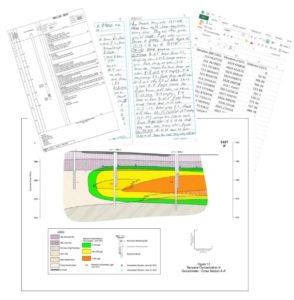Drafting and Mapping Best Practices
Preserving the old and incorporating the new
Online mapping software provides easy access to information and tools that were formerly reserved for professional geographers, drafters, and cartographers.
Best practices in technical drafting and mapping require us to prioritize the validity of data and information to maintain integrity and quality, regardless of the tools used to create the document.
3 key presentation components: technical, logical, and aesthetic
Technical documents must precisely represent features, information, and data. Logically, these details should be shown in a manner that allows others to easily understand the purpose of the map or drawing. And naturally, the document will have a greater impact if it is aesthetically pleasing. All three of these components are critical to ensuring accuracy, comprehension, and value.
Quality drafting and mapping practices

There are some basic rules for pulling together an accurate, purposeful map.
- Remember to identify and review sources
- It is important to carefully interpret and verify all data and features to be presented
- Depending upon your needs and the use of the map or drafting project, you may want to consider consulting a professional to protect your investment
- When necessary, a registered land surveyor should be consulted to provide a property boundary survey and define building and site features.
Maps are fun, but they are also serious documents that have legal implications, and it is contingent on the user to respect this distinction.
Many people enjoy reading maps; some of us even love technical maps! Have fun and make good choices when creating or using all mapping programs. Visit Esri.com for to some cool maps and best practice tips.